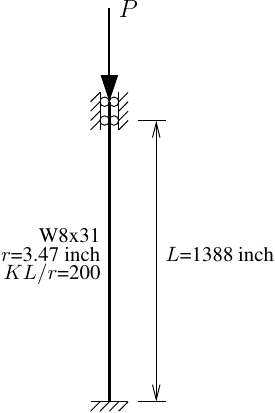OpenSees Cloud
OpenSees AMI
Apples and Oranges
Original Post - 06 Apr 2025 - Michael H. Scott
Show your support at Buy Me a Coffee.
Good articles on finite element formulations combine accessible theory with reproducible examples. One such article, Alemdar and White (2005), balances theory and examples for distributed plasticity frame element formulations quite well.
I never did more than skim the article and give indirect, second hand citations over the years. So, when I recently rolled up my sleeves to take a closer look, I was surprised to find the authors did not make apples to apples comparisons of element performance. To their credit, the authors did not try to hide the uneven comparisons–but you do have to read the article carefully. Light snark forthcoming, I still think the article is good.
In a nutshell, the article presented displacement-based, force-based, and mixed formulations for simulating the material and geometric nonlinear response of frame elements. But only the displacement-based and mixed formulations included \(P-\delta\) effects inside the basic system while the force-based formulation was geometrically linear inside the basic system.
Thus it was no surprise that one conclusion of the article was “the mixed element yields the best results”. I mean, would you expect any other outcome if the locking-free displacement-based formulation and the force-based formulation without \(P-\delta\) effects were your points of comparison?
Although Alemdar and White cite Neuenhofer and Filippou (1998), they did not use the CBDI formulation in their comparisons. While the CBDI formulation for elastic response is straightforward, the significantly more complex formulation for inelastic response never went public until years later. So I can see why Alemdar and White opted not to include the CBDI formulation.
The remainder of this post examines how well the CBDI formulation performs for one of Alemdar and White’s examples.
Elastic and inelastic buckling analysis of a fixed-fixed concentrically loaded steel column is Example 2 from Alemdar and White (2005). The section is W8x31 oriented for strong axis bending and KL/r=200, which is the largest slenderness ratio AISC recommends for compression members. With K=0.5 for fixed-fixed end conditions and r=3.47 inch for the W8x31, the column length is a whopping L=1388 inch–over 115 ft. No big deal, it’s a good test problem.

To initiate buckling, the simulations use an initial out-of-straightness of L/1000 at column mid-height. The elastic buckling load is Pcr=65.4 kip. The simulations of inelastic buckling use Fy=50 ksi for the steel yield strength.
Geometrically Linear Force-Based Element
The elastic and inelastic buckling response (axial load vs. lateral
deflection at mid-height) is shown below using a corotational mesh of
two geometrically linear force-based elements (forceBeamColumn) in
OpenSees. The “Converged” solutions were obtained using a corotational
mesh of 40 geometrically linear displacement-based (dispBeamColumn)
elements.

These results match those shown in Figure 6 of Alemdar and White (2005) where the geometrically linear force-based elements overpredict the critical buckling load. After stating the errors using the mixed element are small compared to the converged solutions, Alemdar and White go on to say:
“… the flexibility-based element still overpredicts the maximum load by 18% in the inelastic analysis.”
Apples and oranges. The geometrically linear mixed element, i.e., the version without \(P-\delta\) effects, would also overpredict the maximum load by 18% in the inelastic analysis.
Geometrically Nonlinear Force-Based Element
Repeating the analysis with a corotational mesh of two geometrically
nonlinear forceBeamColumnCBDI elements in OpenSees, we obtain much
better results compared to the converged solutions. Each element uses
seven Gauss-Lobatto points as the CBDI formulation requires a decent
number of integration points to approximate the transverse deflection
field.

Apples to apples. These results are on par with the geometrically nonlinear mixed element.